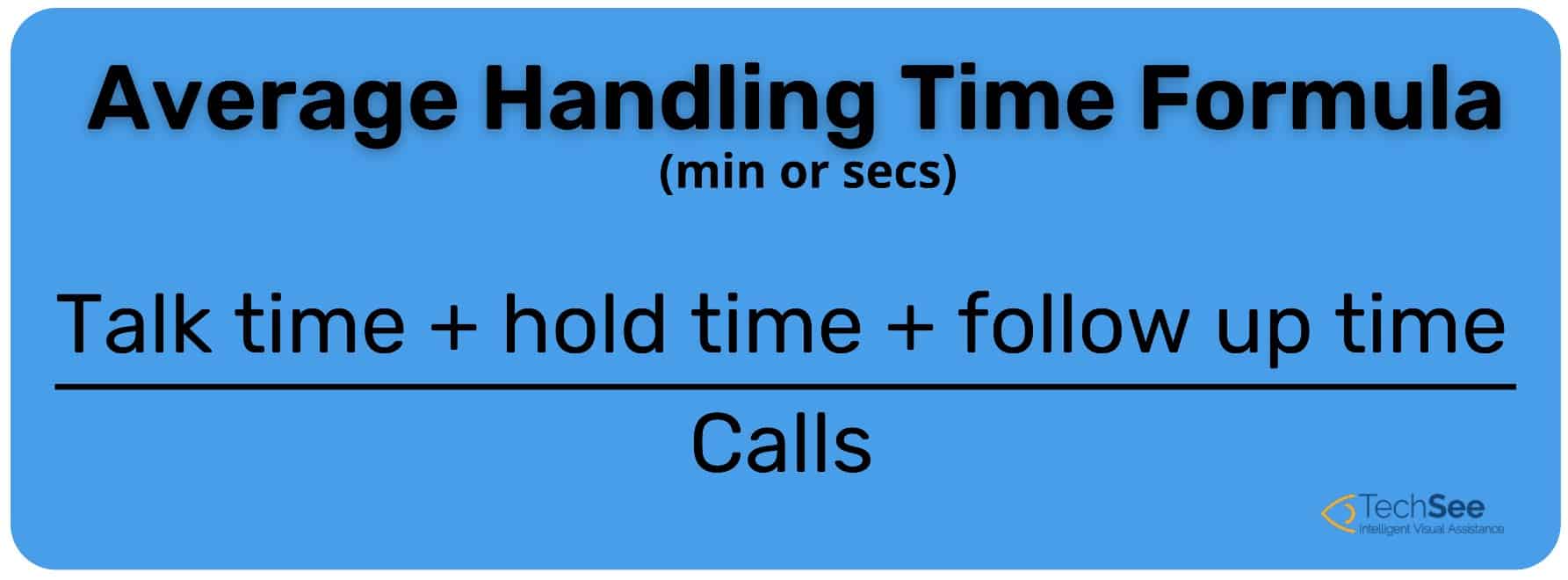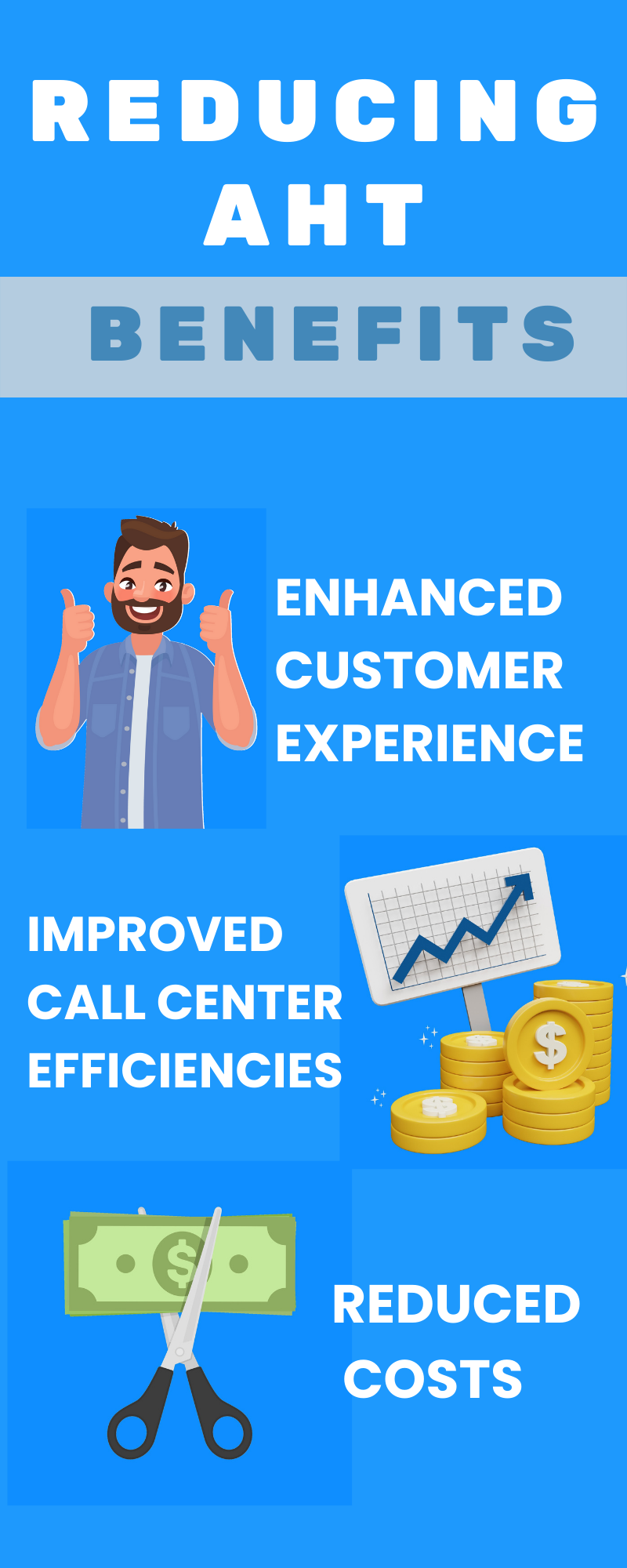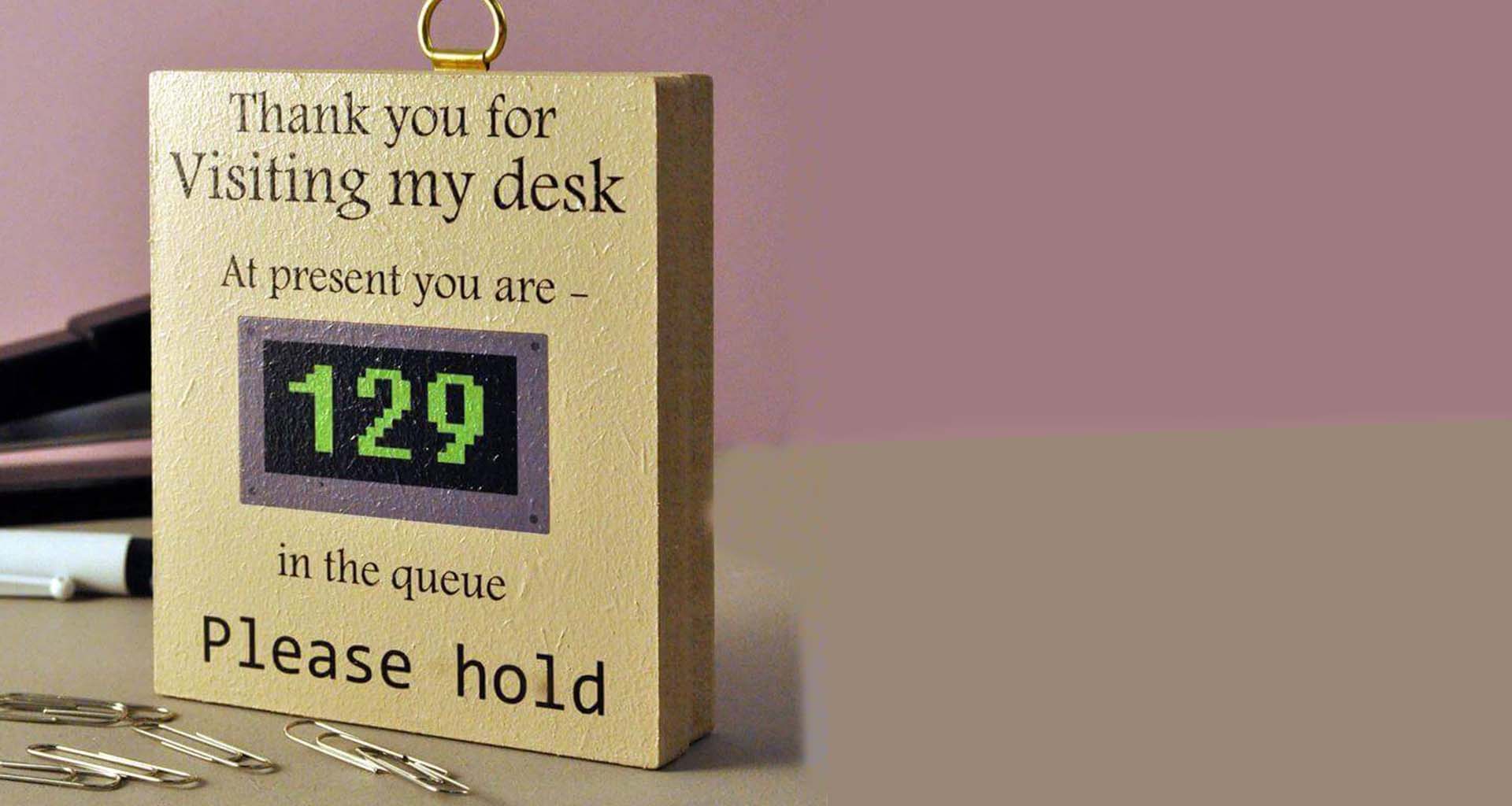Contents
- What is Average Handling Time (AHT)?
- How to Calculate AHT: Formula
- Why is AHT an Important Metric for Measuring Your Contact Center?
- The AHT Debate
- Factors That Distort Average Handling Time
- Average Handling Time Benchmark
- Best Practices to Improve Your AHT
- How to Reduce Average Handling Time with Technology
- What Do We Gain By Improving AHT?
- Conclusion: Use AHT to Enhance Customer Experience
How long would you wait patiently for your customer service request to be resolved? If you’re like 90% of consumers, the answer is 10 minutes or less. Any more than that, you may experience frustration and even hang up the phone, maybe never call again.
Customer-centric call centers must evaluate whether agents are meeting customer expectations when it comes to providing fast solutions and quality assistance. One way this is achieved is by measuring average handling time, otherwise known as AHT.
Download this eBook to discover our KPI data findings from Techsee’s client network
What is Average Handling Time (AHT)?
Average Handle Time or AHT is a contact center KPI that measures the average duration of communication between an agent and a customer. According to the 2022 Zendesk Customer Experience Trends Report, 66% of customers still typically resolve their issues with a company via telephone, which makes AHT an important KPI to track. A high AHT may point to uninformed agents, lengthy processes, or a poor call routing strategy, which could lead to frustrated customers. A low AHT generally indicates that agents are providing a positive customer service experience and ensuring cost efficiencies, as shorter call times allow agents to handle more inquiries during a shift.
How to Calculate AHT: Formula
To calculate average handling time, contact centers traditionally use this formula:

For example 275 calls that take approximately 2500 minutes, plus total hold time of 600 minutes, plus follow up time of 300 minutes, divided by the number of calls received. The result is an AHT of about 12 minutes. A similar formula can be used to calculate parallel metrics about other channels, like chat or email.
Why is AHT an Important Metric for Measuring Your Contact Center?
AHT is essential for enabling contact center leadership to assess the efficiency of agents and the end-to-end customer service processes. By tracking AHT, contact centers can collect the data they need to minimize hold times, optimize talk times, and increase the number of calls handled – leading to greater customer satisfaction, operational efficiencies, cost savings, and agent performance.
The AHT Debate
While measuring AHT with an eye toward decreasing the length of time an agent spends on each call is considered essential for efficient call center operations, not all thought leaders agree with this approach. The Harvard Business Review states that AHT should not be prioritized as it motivates agents to keep calls short, even if that negatively impacts issue resolution or company costs. For example, instead of investing the time to fully resolve the customer’s issue during the call, an agent simply seeking a low AHT may feel compelled to quickly close the ticket. The agent may only partially resolve the customer’s issue, resulting in the need for a follow-up call, or unnecessarily dispatch a technician to resolve the issue, driving up costs.
Moreover, customer-centric companies are adopting a multiexperience approach in their customer service strategy, with the use of email support, automated chatbots, support via live chat, Self-service content, and communities and forums, to cite a few examples. This shift from the traditional voice-only contact has forced companies to re-examine their approach to average call handle time. While the length of a phone call is relatively straightforward to measure, other channels are more complex. For example, agents on messaging apps can be logged in to multiple cases at the same time, and social media engagement may take place over a series of days.
In addition, when customers are transitioned between channels – such as from email to chat to live visual support – multiple agents often work on the same case, even further complicating the measurement of AHT. Also, with the advent of self-service channels, it is often the more complex cases that are actually called in to a live agent. These are the issues that will inherently take more time to resolve, resulting in a longer AHT.
Factors That Distort Average Handling Time
Not all AHT measurements are 100% accurate, which means that a lower AHT may not necessarily mean a call center is performing as well as it should. There are a number of factors that may be distorting your call center’s AHT metrics:
Outliers
A single lengthy call can easily throw off an average. An extremely long call can be the result of an unusually complex issue, or a simple case of human error if an agent forgets to stop the clock when he goes to lunch.
IT Issues
Slow computer systems or the need to transition between multiple systems are often the culprit when AHT is higher than it should be.
Dishonest Practices
Some agents have learned some “tricks” of the trade to ensure their AHT numbers never go beyond a certain length. They may transfer a complex inquiry to another department or agent, or simply cut off a customer mid-call due to “phone problem.”
Extended Follow-Up Time
Follow-up time is designated for wrap-up tasks related to a specific call, but agents may use this time for personal breaks.
Alternate Goals
Not all businesses strive to lower AHT, such as when building relationships with customers is seen as more important. For example, agents at Zappo’s and Magnolia are encouraged to chat with customers as long as possible to help customer’s connect to the brand.
Average Handling Time Benchmark
According to research, the industry standard AHT is 6 minutes and 3 seconds. However, AHTs may differ widely depending on a company’s approach to the customer experience, the complexity of their products or services, and the structure of their customer service organization. For example:
| Customer Service Area | Using Augmented Customer Service |
|---|---|
| Field Service | AR in field services |
| Contact Center | TechSee live contact center |
| Self Service | Self-installation survey |
Best Practices to Improve Your AHT
The drive to reduce AHT is nothing new. Common practices are to record calls to critique efficiency, use cheat sheets a specific handling protocols to ensure a fast resolution, develop robust self-service options on the company’s website and deploy additional floor managers to provide back-up assistance to agents when needed.
If your call center’s AHT is higher than it should be, here are 5 best practices to reduce average handle time while avoiding the risk of agents rushing the customer off the phone:
Enhance Agent Onboarding
Agents that haven’t received proper onboarding may be responsible for driving up AHT with lack of knowledge. Make sure all processes are properly documented, customer information is easy to find, product data is updated regularly, and all tools and software can be navigated seamlessly.
Improve Agent Training
One way to help agents improve is by recording their calls for future review. Recorded calls help agents learn from behaviors or gaps in knowledge that result in unnecessarily long calls. Live monitoring of calls can help agents in real-time by using Whisper coaching to prompt appropriate responses.
Optimize Call Routing
A flawed call routing system is a time-waster and a source of frustration for customers. A well-designed IVR routing system can ensure customers are connected to the correct agent on the first call.
Allow Peer-to-Peer Communication
Agents should be able to collaborate with each other to get quick answers using an internal chat tool. This eliminates the need for frustrating call transfers, or excessive hold times.
Create Escalation Protocols
While agents should be able to handle most inquiries on their own, sometimes escalation is necessary. Establish clear protocols for when and how agents should escalate issues to senior staff.
How to Reduce Average Handling Time with Technology
Technology-based solutions can be implemented that help to reduce AHT, without negatively impacting the quality of your customer service or the customer’s overall experience with your company. Some examples:
Virtual Assistants to Collect Basic Information
Agents can save significant amounts of time by having virtual assistants – also known as chatbots – cover the basics at the start of a customer interaction. This may include the customer’s name, account, or policy number, and the general reason for the call. This early collection of data ensures the customer is routed to the correct department, and eliminates the need for agents to waste precious call time collecting this information.
Robust Self-Service Options
Customers want to help themselves at a time most convenient to them. Make sure your self-service channels are as robust and easy to use as possible, so agent’s time is not wasted on answering questions that could easily be found by the customers themselves. This could include FAQs, detailed information on company’s products, shipping information and return/refund policies.
Live Chat Efficiencies
As live chat continues to gain in popularity on B2C websites, companies should ensure agents are utilizing the technology efficiently and in a manner that will reduce AHT. For example, one agent can engage in more than one live chat session at a time, and canned messages or responses can be utilized to save time.
Visual Assistance for Faster Issue Resolution
Visual assistance allows an agent to see a customer’s issue via their smart phone camera or by sharing their smart phone screen. This enables the agent to quickly diagnose the problem and visually guide the customer towards a solution. Visual assistance eliminates the long lists of questions and answers that agents traditionally used to get to the root of a problem, effectively reducing AHT.
RELATED READING: Optimizing AHT During A Visual Engagement Session
What Do We Gain By Improving AHT?
There are a number of benefits of improving average handling time:
Enhanced Customer Experience
Faster resolutions mean happier customers.
Improved Call Center Efficiencies
By plugging the problematic factors that had been slowing AHT, your overall contact center operations will become more efficient.
Reduced Costs
Faster resolutions mean less staff time and lower costs.
Conclusion: Use AHT to Enhance Customer Experience
Every business can benefit by measuring their contact center’s Average Handling Time. Analyzing the factors that drive the metric will help lead to improvements that impact every area of the company, such as customer satisfaction, operational efficiencies, and cost savings. Take the time to consider which best practices and technical tools can help you reach your KPI goals while still providing your customers with an optimal brand experience now and in the future.







